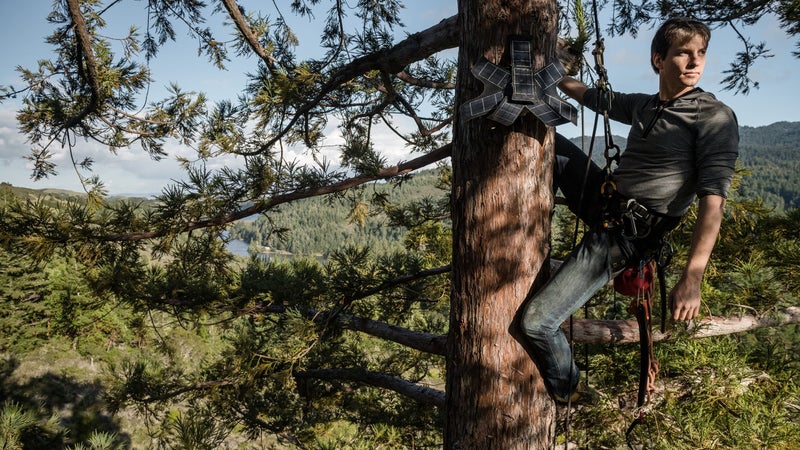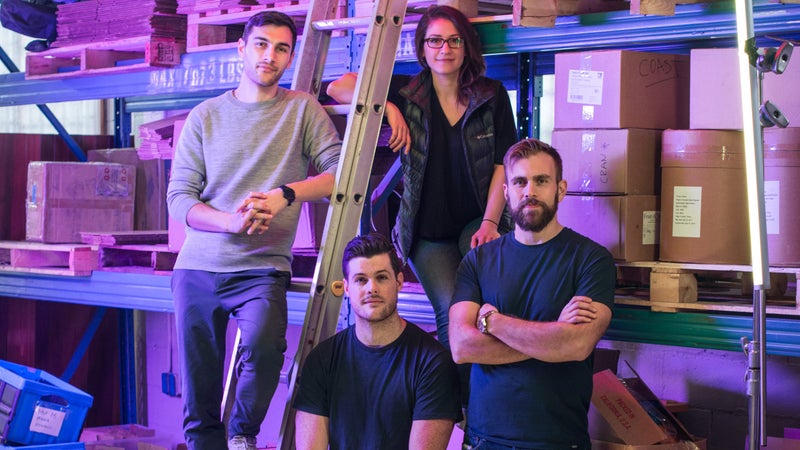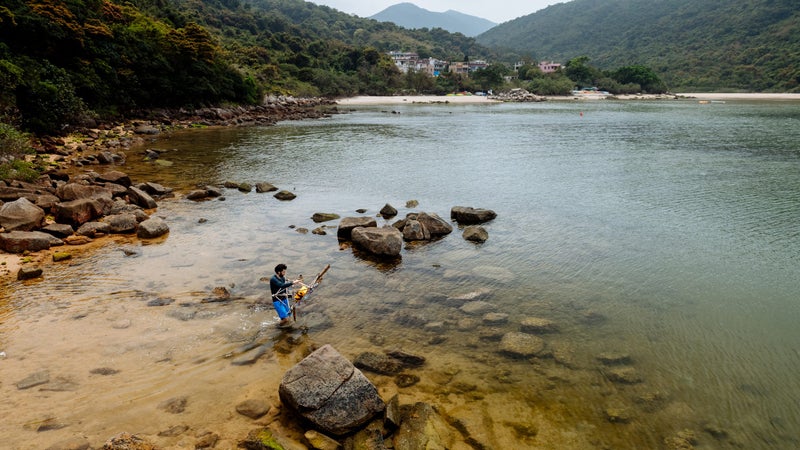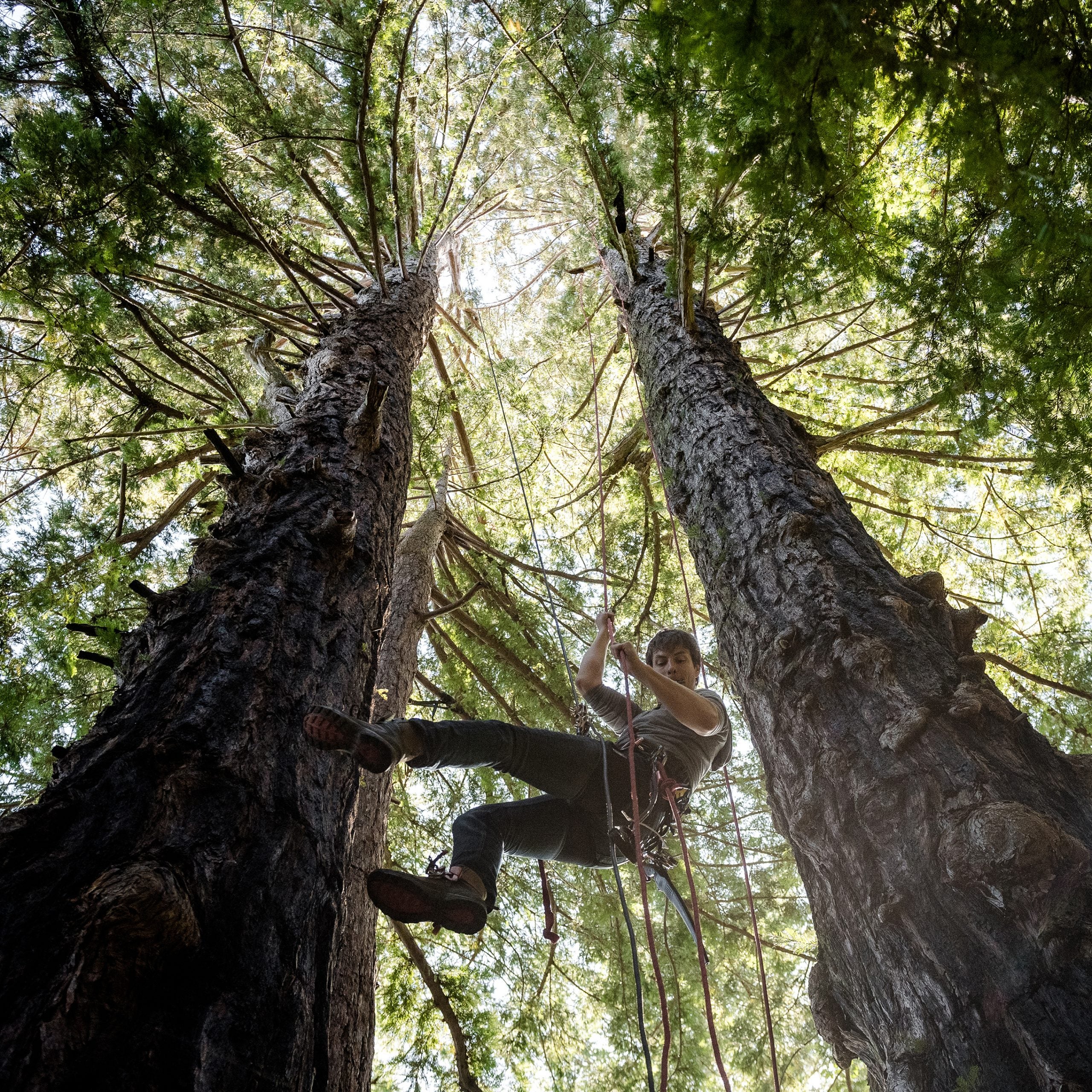Solving the world’s problems isn’t getting any easier. But not everyone is throwing up their hands. Look closely and you might notice pockets of motivated world-changers who are using surprising ideas and a little ingenuity to upend the status quo and get us back on the right track. Meet three innovators doing exactly that.
Giving the Rainforest Ears
Topher White, Founder, Rainforest Connection

The jungle is loud. So loud that in 2011, while volunteering at an ape sanctuary in Borneo, physicist and software engineer Topher White found that the constant din of calling birds, chirping insects, and jawing apes drowned out the sound of chainsaws. The same screaming chainsaws White saw in action a few minutes later when he and his girlfriend stumbled across illegal loggers felling trees just a five-minute walk from camp. What good were rangers, White wondered, if they couldn’t hear a chainsaw a hundred meters away?
White, though, is a tinkerer. Impressed by the cellular coverage in the forest, he dreamed up a network of cell phones—repurposed as listening devices—hidden throughout the forest that could help catch poachers of trees and animals. That was the genesis of White’s nonprofit . Employing donated used Android phones outfitted with solar packs and running acoustical-analysis software that White developed, White’s team designed a forest warning system. When a cell phone detects a chainsaw or other mechanical noises, it texts the location to local rangers.
So far, Rainforest Connection has tested its system in the jungles of Cameroon, Sumatra, Ecuador, Peru, and Costa Rica. By the end of 2018, White hopes to triple the scope of the project. And it’s not solely about saving the trees anymore. White’s bio-acoustic software monitors other jungle sounds, helping ecologists track elusive species. A free app even lets the public eavesdrop on the deep jungle. “The forest sounds like a frigging Star Wars laser battle, and it changes hour by hour,” says White. “We want people to build a strong connection with the forest so they’ll help protect it.”
Eat More Crickets
Dylan Jones, CEO, Coast Protein

“Five years ago, there wouldn’t have been a chance in hell I would have envisioned myself selling crickets,” says Dylan Jones, CEO of , makers of cricket-based protein bars and powders. But then he realized that eating bugs could help save the world. With a master’s degree in sustainability, Jones used to work in the mining industry, but he couldn’t help thinking that one of the really big impacts on the environment is all the water and land used to feed livestock. The solution was hopping all around him: insects. Hive crickets, in particular, are easy to raise, and they use about 2,000 times less water than cattle. By weight, they’re 60 to 65 percent protein, whereas a chicken breast is 33 percent. Even more promising, five kilograms of cricket protein can be produced on one square meter of land per year, versus the 35 to 50 square meters needed for the same amount of beef.
So, in mid-2016, Jones and four co-founders launched Coast Protein in Vancouver, Canada. Slowly but surely, the sustainability and nutritional aspects of the product—crickets offer a full complement of amino acids, B12, and iron—won over hesitant consumers. Today the bars are showing up in mainstream outlets. “We’re seeing a lot of excitement from the kind of people who are attuned to the idea that the food you eat has a long-term impact upstream and downstream,” says Jones.
You’re Gonna Need a Better Boat
Cesar Jung-Harada, Founder, Scoutbots & MakerBay

When inventor and engineer Cesar Jung-Harada saw the televised devastation of the 2010 BP oil spill, he rushed to New Orleans to help. What he found was an engineering challenge: fishermen dragging booms through the oil, trying to corral the slicks. Not only was the technique ineffective—the booms collected only about 3 percent of the oil—but the oil fouled the boats and threatened the fishermen’s health. Jung-Harada’s first concept was for a boat with a moveable rudder that could tack quickly through the spills, collecting oil more efficiently. Then he scrapped that idea for a boat with one huge rudder, which in turn evolved into a boat with a shapeshifting hull to give it pinpoint control—a concept he calls Protei. But while Protei never saw action cleaning up oil spills, it spawned a cottage industry in the design of shapeshifting robotic boats intended for solving some of the ocean’s most difficult problems.
Seeing the potential to tap into a global base of knowledge, Protei transformed into an open-source engineering movement. Teams in Korea, New York, Mexico, and the Netherlands began improving on the design. Today the community hopes interested companies or researchers will use their Protei designs to build a fleet of 3-4 foot Scoutbots which could autonomously roam the ocean detecting oil spills, plastic pollution or radioactivity, map coral reefs, or do things the designers haven’t even yet imagined.
Helping to save the world’s oceans was the original conceit. But it just might be Jung-Harada’s experience promoting the free flow of ideas that ends up having the biggest impact. The open-source concept inspired him to co-found MakerBay, a space in Hong Kong where eco-minded hobbyists and inventors now share tools and insights. Instead of focusing on how much money one can make through tech, Jung-Harada argues that people need to put the environment, not profits, first. “Without the environment, you have nothing,” he says. “Once we understand this, it’s obvious why we need open-source environmental technology. We need to share information.”
revolutionized the underwear industry with the introduction of the BallPark Pouch™ – a patented technology featuring breathable mesh panels to prevent skin-against-skin friction and offer chafe-free support. Today, SAXX aims to support men (literally and figuratively) in pushing the world forward by challenging the status quo to create their own positive impact.

